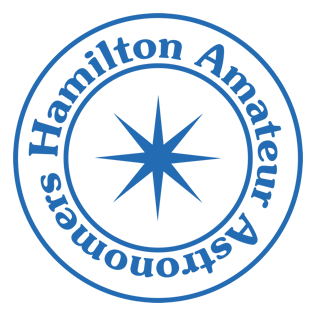The Hamilton Amateur Astronomers provide various Observing Programs. These Observing Programs are designed to provide a direction for your observations and to provide a goal. The Observing Programs have certificates to recognize the observers’ accomplishments and for demonstrating their observing skills with a variety of instruments and objects.
Observing Programs offer a certificate based upon achieving certain observing goals. You are required to observe a specific number of objects from a list or of a specific type (meteors, comets, etc.) with a specific type of instrument (eyes, binoculars, telescope). Some Observing Programs have multiple levels of accomplishment within, and some permit observations of different types (manual vs. go-to, visual vs. imaging) and note this on your certificate. There is no time limit for completing the required observing but good record keeping is required.
Observing Programs are designed to be individual effort. Each observer must perform all the requirements of each Observing Program themselves and not rely on other people to locate the objects. This is called “piggy-backing” and is not acceptable for logging objects for any of the Observing Programs. You are allowed to look through another observer’s telescope to see what the object looks like, but you still need to locate and observe the object on your own.
When you reach the requisite number of objects, your observing logs are examined by an appropriate authority and you will receive a certificate to proclaim to all that you have reached your goal.
When you complete an Observing Program by yourself, you should feel a sense of pride and great accomplishment for what you have just completed. Each Observing Program is designed not only to show you a variety of objects in the sky and to learn some science related to those objects, but to also familiarize you with your telescope and how to use it, night-sky navigation (the ability to find the objects in the vastness of space) and to learn some observing techniques that will enhance your viewing of the objects in the programs.

